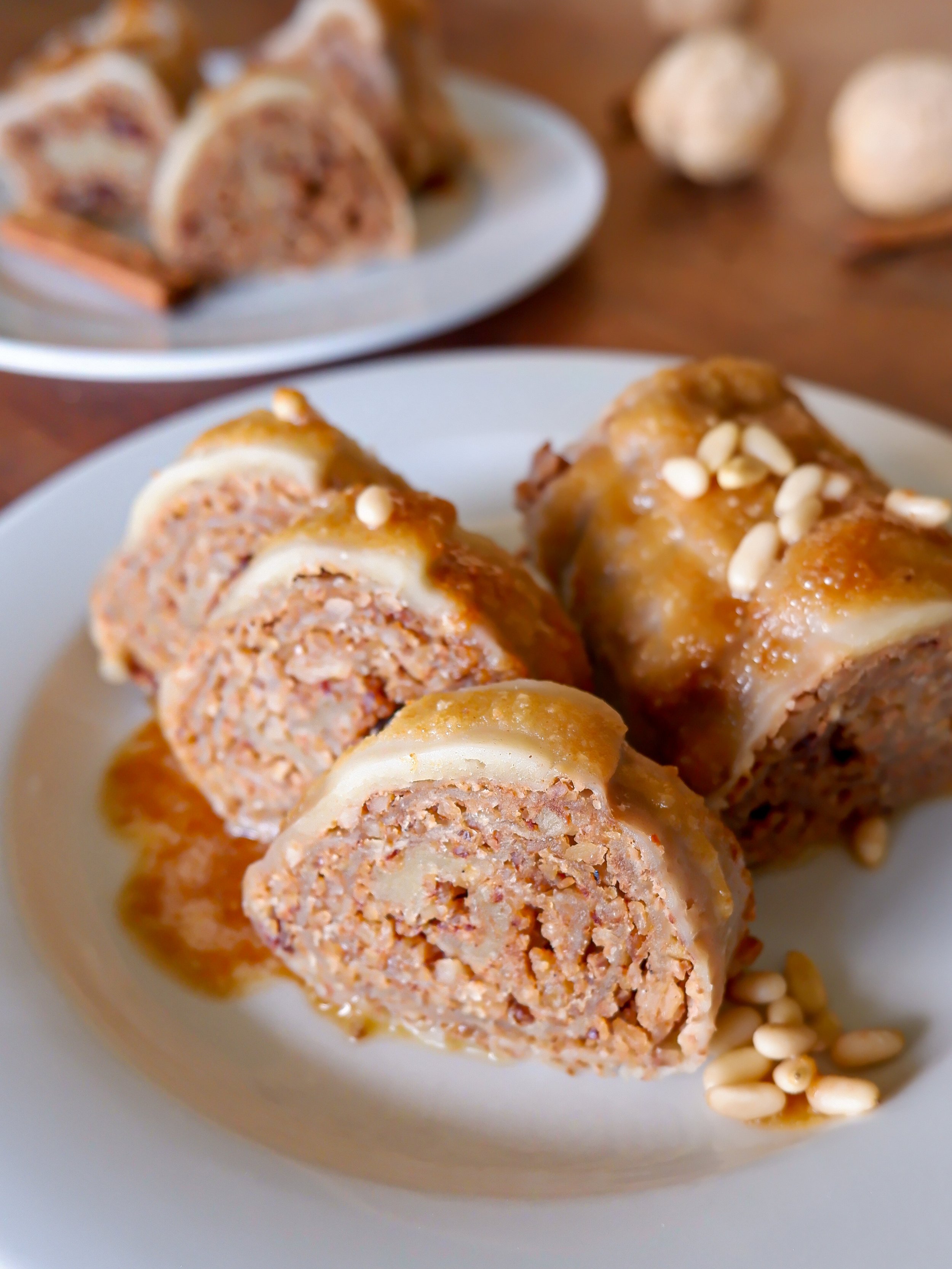Štruklji Recipes
Štruklji is one of the most typical Slovenian dishes, prepared in every geographical region of Slovenia. And of course, each region has a different recipe! The dough used for štruklji can be either leavened or phyllo dough. The filling is either sweet or savory; in traditional recipes štruklji are filled with farmer’s cheese, walnuts, tarragon, apples, among others; in modern recipes there are basically no limits. They are either baked or cooked, served as an independent course or as a side dish.
The word štruklji is derived from the German word ‘Struckel’, which is very similar to ‘Strudel’, which indicates a snail-shaped and rolled pastry. The first recipe, for cooked tarragon štruklji, dates back to the 16th century (1589) to the court chef in Graz. It is assumed that Slovenians knew štruklji already a few centuries before the first recipe appeared. Probably they first appeared on monastery menus and then spread first to the countryside and then to the cities. For example, we know based on the menu from 1737 of the Žička Kartuzija monastery, that the brothers ate štruklji in February and in late Autumn months every Saturday for lunch and for all the important holidays, for example on Ash Wednesday on the 2nd of February 1738. They prepared them cooked and baked. Valentin Vodnik also included two recipes for štruklji (crab and almond štruklji) in his Kuharske bukve, the first Slovenian cookbook from 1799. He probably knew more recipes, however, since he writes ‘Prepare the dough as for other štruklji.’ His recipes are for baked štruklji, even though it is assumed that at the time most štruklji were mostly cooked. In the Slovenian cookbook by Magdalena Pleiweis from 1890 there are 30 recipes for štruklji. In the 13th edition of the Slovenian cookbook from 1956 there are 63 recipes from štruklji. In the 1999 edition, edited by Vendelina Ilc, there are already 80 recipes for štruklji. Also testifying about the widespread popularity of štruklji in Slovenia are handwritten manuscripts left behind by housewives that lived over a hundred years ago. An important source of recipes were cooking classes organized by housewives during the world wars. They are also a part of the reason that the recipes and the tradition of preparing štruklji are preserved to this day.
If you are not lucky enough to live in Slovenia, where you can get any štruklji your heart desires at any time in the first ever Slovenian Štrukljarnica (dumpling house serving štruklji) Moji štruklji Slovenije, then these recipes are for you.
Bogataj, Janez. Taste Slovenia. Ljubljana: Rokus Gifts & National Geographic, 2007.
Kuhar, Boris. Štruklji. Ljubljana: Cankarjeva založba, 2015.



